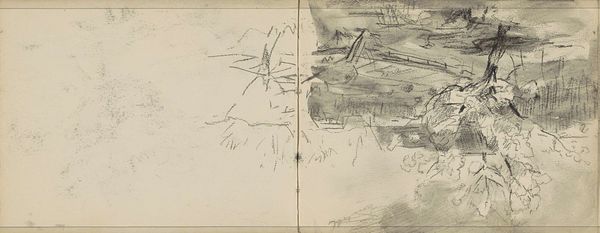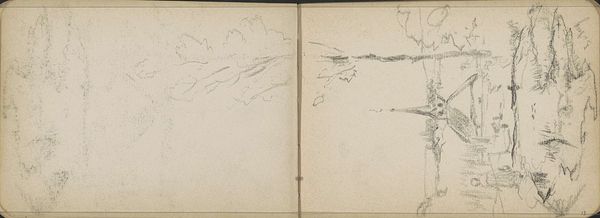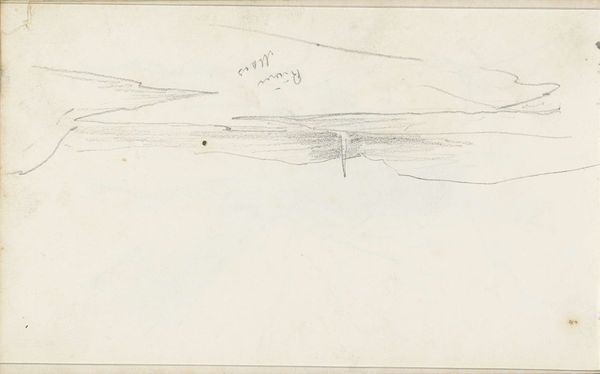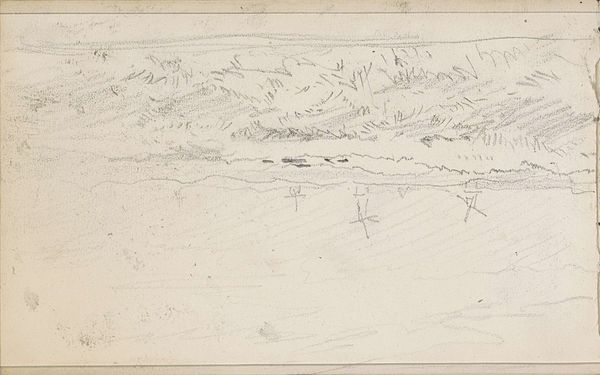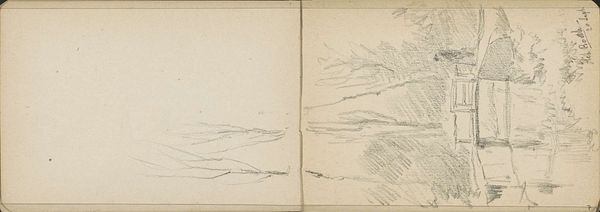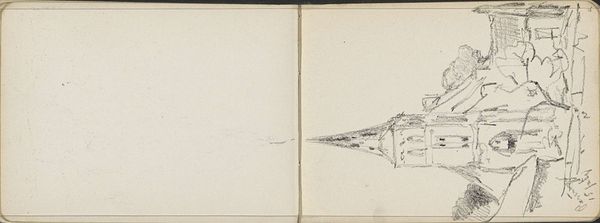
Herder met een schaapskudde in een landschap en een lezend meisje in een stoel 1848 - 1888
0:00
0:00
antonmauve
Rijksmuseum
drawing, pencil
#
portrait
#
drawing
#
self-portrait
#
landscape
#
pencil
#
genre-painting
#
realism
Copyright: Rijks Museum: Open Domain
Curator: Looking at this pencil drawing, created by Anton Mauve sometime between 1848 and 1888, I am struck by the contrasting scenes depicted. We see "Herder met een schaapskudde in een landschap en een lezend meisje in een stoel" (Shepherd with a Flock of Sheep in a Landscape and a Reading Girl in a Chair). What do you think about this particular piece? Editor: My immediate impression is of a fragmented peace. The drawing style itself contributes to this feeling, like a faded memory. It's minimal, but the separation of the outdoor scene of labour from the quiet interior feels significant. The contrast sparks a conversation about the lives of women versus men, perhaps, during that time. Curator: I agree. This division offers insight into societal roles and perhaps personal reflections of the artist. The shepherd with his flock, seemingly dwarfed by the landscape, carries archetypal symbolic weight. Shepherds have represented care, guidance, and even divine leadership across cultures for millennia. But who is that one man in a field when contrasted with domestic comforts? Editor: Exactly. And consider the girl inside: literature was transformative. It offers a window into intellectual life beyond domestic space, while the confines of her chair seem restrictive at the same time. Curator: Perhaps she's not confined, but protected. Think of the historical prevalence of depicting women in art reading in intimate and personal ways. A painting becomes more personal in ways that transcend even space or identity. The act of reading as a symbol can highlight social class, access to education, or, more profoundly, personal escape and contemplation. Editor: The social position of these two figures and even that of Mauve becomes something for debate, though. Can an art form truly ever separate itself from the societal positions? Does Mauve seek to elevate one person above the other through contrasting visuals, I wonder? Does this have political and social consequences to even ask such a question? Curator: That's a valuable question, even today. Even a simple drawing becomes an active expression through lines of contrast and the act of observation, raising essential queries about how we perceive the world and our place in it. Editor: These kinds of discussions reveal art as both reflection and instigator, challenging us to not simply observe but to critically question the world around us. Thanks for this journey into deeper meanings.
Comments
No comments
Be the first to comment and join the conversation on the ultimate creative platform.



